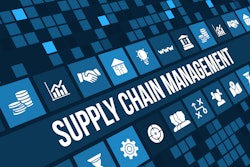
Supply chain disruptions are an ongoing challenge for global businesses. Whether triggered by pandemics, geopolitical conflicts, or policy shifts, the severe ripple effects include higher costs, lost revenue, stockouts, and unhappy customers.
Unfortunately, many of the factors that can cause supply chain problems are outside the control of the companies that depend on the ability to trade for goods and services. Businesses must therefore have contingency plans and look internally at the aspects of their business they can control to insulate from supply chain pressures and minimize financial impacts across their operations.
Strengthening internal operations, especially financial processes, is one of the smartest ways to build resilience. Accounts receivable (AR) is a great place to start.
Like supply chain management, accounts receivable is a critical function of any global business. Yet, many companies continue to manage AR using spreadsheets and manual processes that can result in delays in collections, errors, or even missed opportunities to spot a looming issue with a supplier.
By adopting a technology-enabled, modernized approach to AR, global businesses can improve cash flow, maintain liquidity, optimize working capital, and maintain healthy relationships with customers during periods of supply chain uncertainty.
Adopting an automated AR strategy to improve collections can help any global business manage supply chain pressures and thrive in the 4 following ways:
1: Minimizing borrowing needs. Supply chain issues often force companies to invest in safety stock, new technologies, logistics upgrades, or backup suppliers to endure shortfalls. In all cases, this likely would require taking on more debt and borrowing additional capital at today’s higher interest rates. AR automation technology can reduce days sales outstanding (DSO) and free up cash, leading to better liquidity and minimizing the need to take on costly debt.
2: Preserving relationships and loyalty. When products are delayed or services are impacted, customer frustration can rise quickly. In today’s market, B2B and B2C customers have all sorts of opportunities to switch suppliers and vendors. Delivering great experiences, stellar customer service, and support is key to retaining these relationships during tenuous times. Payment experiences can play a significant role, particularly with end customers when supply chain problems arise resulting in product availability issues or compromises in quality of service can be compromised. AR automation enables better payment experiences, helping companies avoid friction and frustrations that can erode trust and loyalty at a time when it is needed most.
3: Incorporating a personalized touch. Not all customers are the same. Some pay early, some pay late, and some need more reminders than others. Those with a strong track record of making timely payments should be handled with a different approach than a continuously delinquent or difficult-to-reach debtor. AR automation allows businesses to engage each customer accordingly and incorporate a degree of personalization in their outreach, improving outcomes during times of disruption.
4: Closing the knowledge gap. Manual AR processes often rely on knowledge held by individual employees, Whether it's accounts personnel or those responsible for managing relationships with suppliers, upheaval can ensue when key people depart. Companies using platforms like QuickBooks and Excel to manage AR and suppliers can experience debilitating knowledge gaps related to which customer always pays late, which supplier needs extra lead time, etc. An enhanced and augmented approach to AR not only removes these gaps but also boosts efficiency, improves transparency, and optimizes inventory management and supplier payment processes.
In today’s environment, leaving money on the table isn’t an option. When supply chains are shaky, stronger receivables processes can make all the difference. AR automation is more than a back-office upgrade - it’s a strategic move to improve financial health, reduce risk, and gain control when external pressures mount.


















